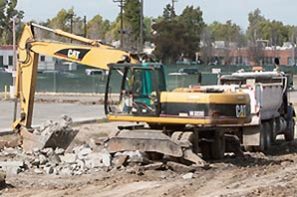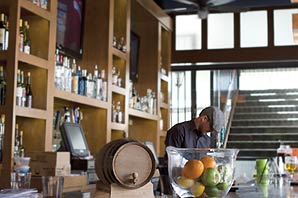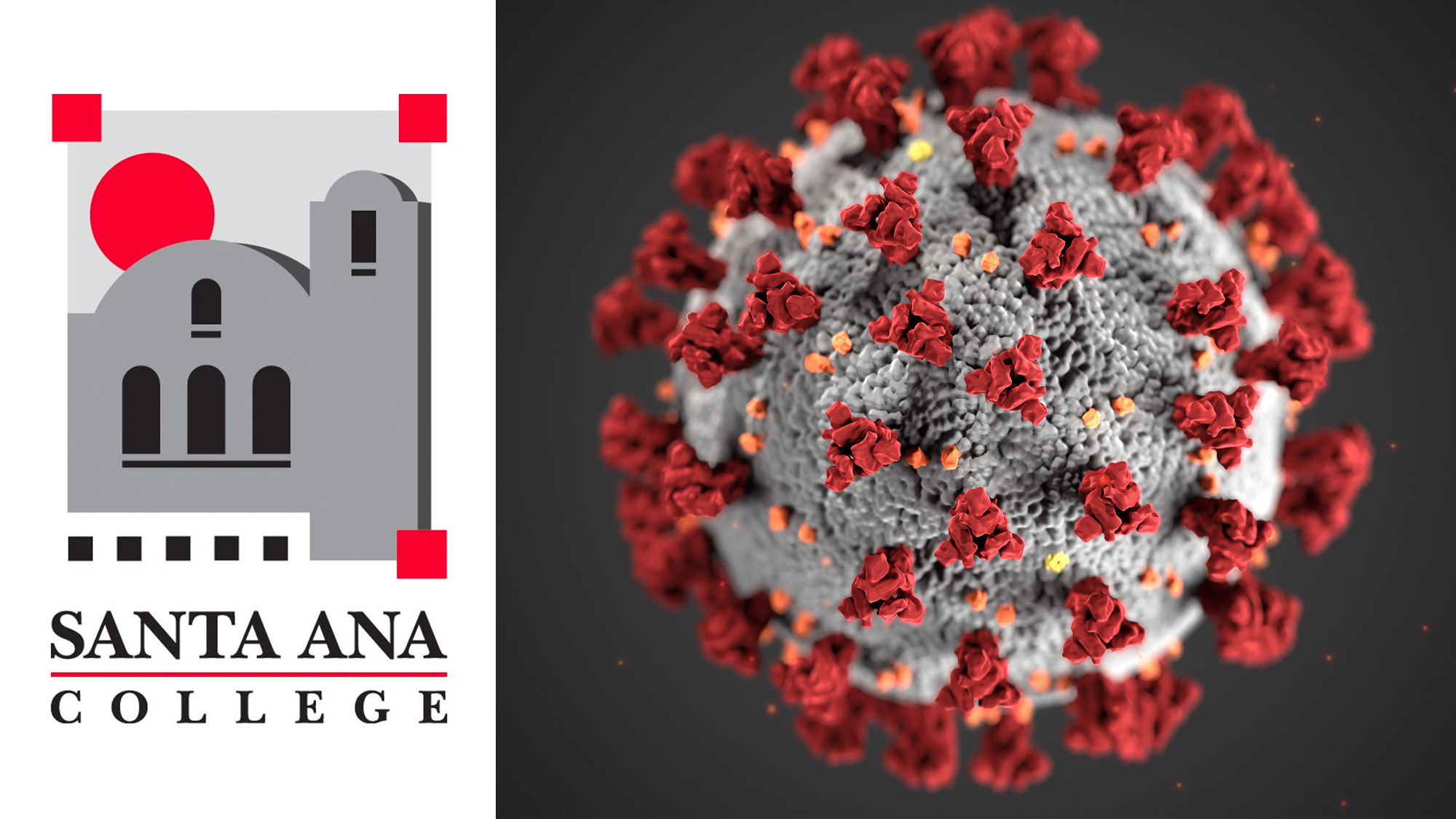NEWS ANALYSIS.
Construction is underway for a new soccer field and entrance at the southwest corner of campus, using the last of a multi-million dollar bond measure passed by voters in 2002, district officials said.
“The planned construction may cause some short term inconveniences,” said Santa Ana College President Erlinda Martinez, “however, in the long run the entire college community will benefit.”
The long-anticipated construction broke ground Feb. 20, and is scheduled to end May 14. It is part of a larger project that runs until May 2013.
In addition to the expansion of Parking Lot 12, the $7.5 million project includes the realignment of College Avenue, spectator stands on the west side of the track and a new soccer field at the corner of 17th Street and College Avenue.
The district wanted to build a parking structure on campus, but the project could not be budgeted into Measure E, a $337 million bond passed by voters in 2002.
“When we went to the taxpayers in 2002, we had a long list of things we wanted to do,” said Vice Chancellor of Business Operations and Fiscal Services Peter Hardash.
“But two or three years later when inflation hit and the prices of steel and concrete skyrocketed, our $337 million would not buy us that much,” Hardash added.
About 90 percent of Measure E has been spent, and the remainder has been allocated to various projects, Hardash said.
“The original plan was to build the parking structure first,” Hardash said. “But there would not have been enough Measure E dollars to do the soccer field.”
Once the new soccer field is finished, the existing field will be converted into a temporary parking lot until a permanent structure can be built.
The temporary lot would cost roughly $750,000 and a 2,000-space structure would cost about $20 million, according to Hardash.
“There is not enough money to take care of everything,” he said, “but we’re trying to stretch it as far as we can.”
Some of the money will go toward the high-cost renovation of Dunlap Hall in the fall.
“There has been a problem with Dunlap hall for years that has never been taken care of,” Hardash said.
The problem lies in the anchoring system for the guardrails surrounding the outer walkways on the second, third and fourth floors of the building.
“I call it ‘Brady Bunch’ architecture,” Hardash added. The system was approved under the building codes of the time, and is now out of code and needs to be replaced.
But the project ran into a bureaucratic pitfall early on.
“Replacing those hand rails would only cost $1 million,” he said, “but here is an example of how bureaucratic our system is. If you spend any more than $400,000 on a building, you have to bring the whole building up to code.” “Code” includes structural code, as well as fire and life safety and access compliance for disabled persons.
In addition, the existing elevator must be replaced and a second one must be added. Each bathroom in the building must also be renovated to meet Americans with Disabilities Act standards, a daunting task in itself.
The ADA standards for bathrooms are so specific and space is so limited, Hardash said, that men’s and women’s restrooms will have to alternate floors of the four-story building.
Bringing Dunlap Hall up to code, which includes replacing the guardrails, will cost the college about $6 million. The renovation will be funded by some of the last Measure E funds.
Hardash said the construction would take about 12 months to complete.
- The two-party system is failing us. - October 19, 2024
- Read our Fall 2023 Print: Vol. 100 No. 1 - October 23, 2023
- Santa Ana College Awarded State Department of Finance Grant - April 2, 2015











